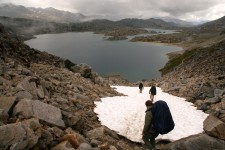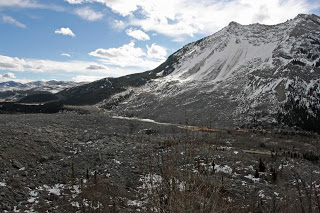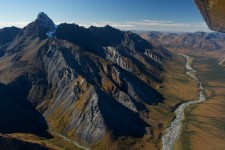More than a highway–the only all-land route to Alaska
Fairbanks 1000 km. Six hundred miles I estimate. There aren’t many road signs in the Lower 48 stating mileage to the next town 600 miles away but on the Alaska Highway it is normal (along with kilometers). As the only all-land route to Alaska, the 1400-mile highway traverses remote country where towns and gas stations are far apart.
Starting in Dawson Creek, British Columbia, the highway crosses northern British Columbia and then the southern portion of the Yukon Territory until it crosses into Alaska and ends at Delta Junction where it connects to the Richardson Highway leading to Fairbanks.
The highway doesn’t take the most direct route but under the circumstances it was built it is an amazing accomplishment. There were no blueprints or maps for the Alaska Highway like there are today. Instructions were to build a road from Dawson Creek to Delta Junction as fast as possible. The United States needed a road to Alaska to expand military defense after the attack on Pearl Harbor.
A road to Alaska wasn’t a new idea; it had been talked about for years between Canada and the United States. There was even a committee formed to oversee it but there wasn’t any urgency to build a road until December 7, 1941. On that day the idea catapulted into reality and the road was completed in record time. By February 2, 1942 the route was decided and on February 14 a work order was issued for construction to begin. On March 2 (less than three months after the attack on Pearl Harbor), American troops arrived in Dawson Creek to begin work. In eight months and 12 days, over 15,000 men constructed the 1422-mile Alaska Highway—less than one year after Pearl Harbor was attacked.
Parts of the highway followed wagon roads, Gold Rush trails and local trails, but the majority of the road was forged through the wilderness as it was built—often by the surveyors climbing trees to look for the best route since there were few reliable maps available. The only requirement was to connect the towns containing airfields, which included Fort Nelson, Watson Lake and Whitehorse. These towns contained air bases on the Northwest Staging Route, which facilitated movement of military supplies to Alaska and aircraft on lend-lease from the United States to the Soviet Union. The air bases became major supply points for road-building material and food and supplies for the troops.
By no means was the new highway a paved road or even a decent gravel road. The road was a single-lane swath bulldozed through the trees in some areas and a corduroy of logs (logs laid parallel to each other to form a hard surface like a bridge) over swampy areas. Bridges (133 total) were built across most of the rivers but the larger rivers initially required ferries. The troops battled muskeg and permafrost that became quagmires of mud that could swallow bulldozers in the summer. They also endured mosquitoes, gnats and temperatures so cold that antifreeze froze.
Improvements started the moment the road was open to military traffic in 1942 and continued after it was opened to civilian traffic in 1949 because of its primitive state. Sections were straightened and widened, steep grades lessened, gravel laid down and eventually all of it was paved.
Even with all the improvements there is still adventure in driving the only all-land route to Alaska across some lonely stretches of country. Part of the appeal is the remoteness with the sparsely located towns, the range of scenery, and seeing a sign for the next town 600 miles away.
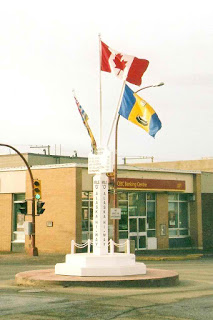 |
| The beginning of the Alaska Highway in Dawson Creek, British Columbia |
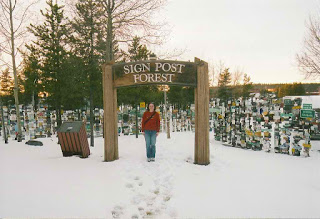 |
|
| The Sign Post Forest in Watson Lake, Yukon began in 1942 when a homesick solider posted a sign with the mileage to his hometown. Now there are over 14,000 signs from around the world. |
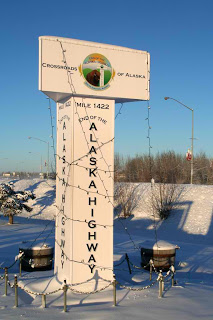 |
| The end of the Alaska Highway in Delta Junction, Alaska |

